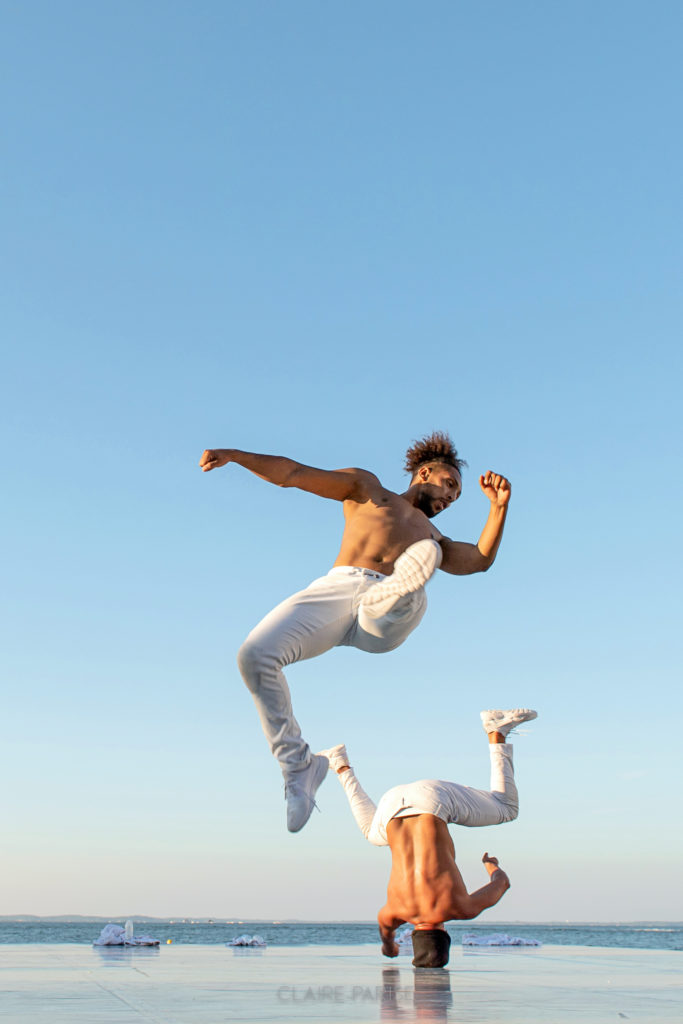
I started dancing in Morocco when I was 10 years old. I’d seen my brother dance a bit, and then one day while watching a documentary on TV talking about life in New York City, I saw a bunch of dancers in Times Square doing street shows. There was one particular move that caught my eye, called the turtle. (In this step, the dancer balances on their hands with their elbows bent into their sides, their legs lifted into the air behind them as they rotate in circles.) I thought to myself, “I’m going to learn to do this move, and all the other moves that come after it.” That’s how it all began for me.
I started dancing in the streets with friends, but I didn’t have a mentor teaching me how to do things correctly. We all just shared information and watched videos of U.S. and European competitions online at cyber shops. In my region, people watched me dancing and doing flips, and everyone would say, “Wow you’re great.” I thought I was the best. That is, until I was 16 years old, and a dancer named Soufiane came to town and watched me. He said, “You know, man, your dancing is not good. You don’t know your fundamentals. Do you even know the names of the steps you’re doing?” His words motivated me to join competitive crews where I could establish a better understanding of technique.

In 2002, I joined a crew called Ichar Style, led by a man named Mehdi Ichar. He was one of the old b-boys that we called “The OGs.” He immediately became my mentor and taught me how to create shows, practice, move from A to B, use my hands and do footwork. I have to give a lot of credit to him. He saw my potential to improve and help his team grow, so he invested in me. There were fees the group had to pay in order to use the gym we danced in, and Mehdi wanted to help me out, so he paid for me to dance with his own money.
Mehdi is a kind man. He analyzed every dancer in the room, waited for the right time to speak, was careful with his words, and told us exactly what we had to do to improve. He was never harsh and didn’t talk back to dancers. He wanted the team to respect each other, no matter how talented we were as individuals. We were a team first. That level of kindness carried over into how he wanted us to treat our bodies, as well. He wanted us to train in a way that didn’t surpass our limits. We often saw tricks at competitions that we wanted to be able to do, but we didn’t have the capacity yet. Instead of jumping in, Mehdi taught us to go through the steps that would increase our strength and allow us to arrive at that level safely. “A lot of people go hard, but they go hard incorrectly,” he would say. He wanted us to remember that there are consequences to choices like that.

Mehdi’s direction set the foundation for my career with various crews and companies, eventually leading me to where I am today, dancing with Compagnie Hervé Koubi. I have heard Mehdi’s words echoed time and again by Hervé. “Be careful,” he says. “Allow your body to tell you when it’s enough.” He is always using me as an example of someone who has been able to continue dancing later than most because I have taken care of myself. I still feel young.
Hervé has also emphasized trust and communication and respect, like Mehdi. He reminds us not to think of ourselves and how good we are, but, rather, focus on dancing together. There are dangerous lifts that we do, so if we are not connected, someone gets hurt. He’s helped us cultivate that trust just like Mehdi did.
Finally, I’d be remiss if, in an article about my mentors, I didn’t take one final moment to mention Faycal Hamlat, Hervé’s assistant. He has worked with me (and the rest of the company) on a technical level. If I want to save myself time on a new trick, I go straight to him.
I want to give a huge thank-you to Soufiane, Mehdi, Hervé and Faycal for allowing me to learn, shine and really be my best onstage. I’m very grateful.




